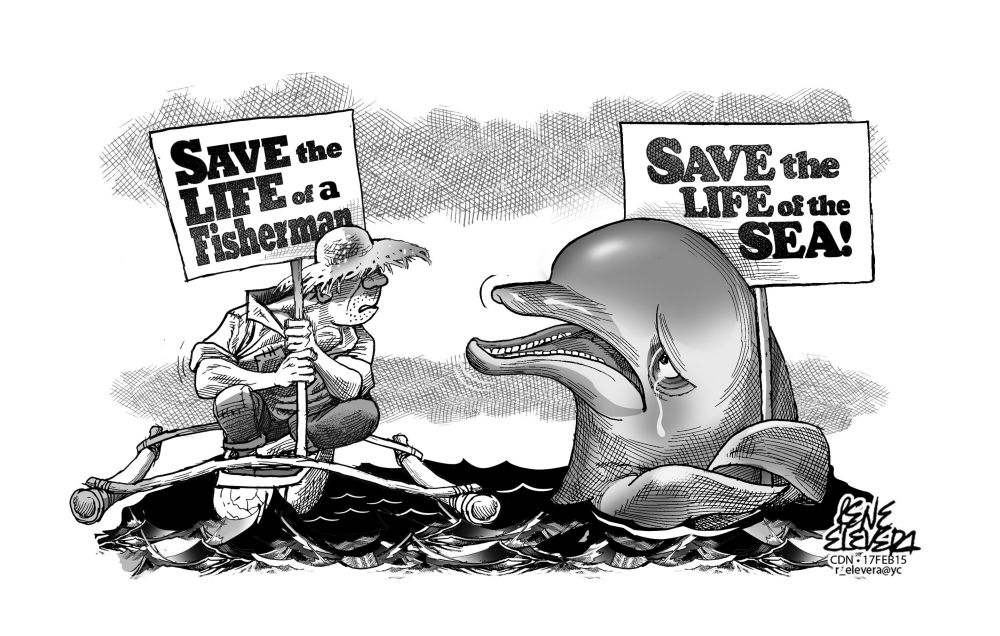Dumanjug Mayor Nelson Garcia said he was misunderstood when he said that whale sharks and dolphins should be killed because “they were parasites” responsible for the shrinking fish supply in the Tañon Strait.
The mayor said this during last week’s Cebu summit on the Tañon Strait that was attended by local officials, environment groups and national government agencies. While he didn’t recant his statements, Garcia defended his position by saying people should be allowed to kill whalesharks and dolphins while commercial fishers should be licensed to fish in the strait.
Why is a mayor defending big time fishers instead of small fisherfolk of his town who are the big losers in the encroachment of municipal waters by trawlers and purse seine operators that use illegal and destructive methods of fishing?
That’s for Garcia to explain.
Suffice it to say that his understanding of whalesharks in the food chain is erroneous and even dangerous.
Whalesharks feed mostly on microscopic plankton, krill and algae. Their choice of food actually helps clean the waters in Tañon Strait and prevents red tide and damage to the coral reefs.
Compare that to commercial fishers and even small fishers who use destructive gear like dynamite, fine-mesh nets that scoop out all marine life, and even muro-ami that pounds coral reefs .
Still, Mayor Garcia is undeterred. He reasoned that the province’s small fisherfolk can’t supply the needs of Cebu’s population of 4 million; commercial fishers are more efficient.
If you look at the Tañon Strait as a business for profit, greed is an easy motivation. Taking what you want from the sea will never be enough. But taking a long-term view, from the lens of sustainability, where you reckon the needs beyond today, to support future generations, any self-respecting entrepreneur would see the value of preserving the bounty and managing this valuable resource to achieve lasting yields.
This is why the three-year management plan whwhich was approved in principle by the Protected Area Management Board (PAMB) was timely.
It came very late, 17 years after its mandate, but it can still provide renewed drive to conserve the Tañon Strait, the largest marine protected area in the country. The ban on commercial fishing there is just a starting point.
The real “pests” endangering the sea don’t have fins. They walk on land and exploit an underwater kingdom, unmindful of the ecological balance that bows to laws of nature that can’t be argued.
Garcia’s insistence that we have to choose between meeting needs of man versus needs of dolphins and sharks is a misleading and stale argument.
Genuine development finds the balance to sustain both humankind and the rest of creation.
